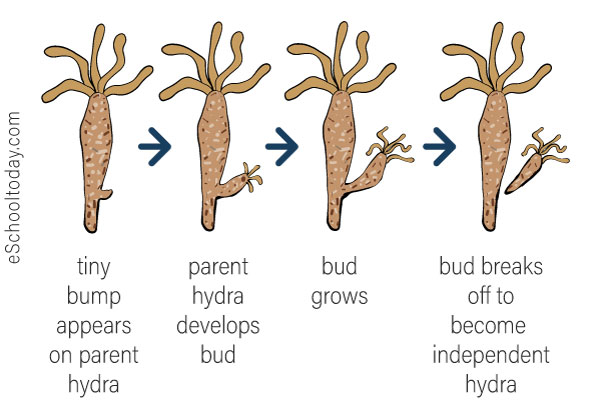- Asexual Reproduction
What is Budding?
In this type of asexual reproduction, the parent organism divides itself into two unequal parts. Budding can occur in both unicellular and multi-cellular organisms.
Illustration of budding in hydra, a multi-cellular organism

It begins by developing a small bud (outgrowth) of a side of the parent organism. The bud may develop from any part of the organism. In most cases, there are special areas on the parent organisms that promote bud development. Then the bud breaks off as a completely new organism. Organisms such as yeast (unicellular organism), hydra (multicellular organism), sponges, and some worms (flatworm) reproduce in this way. The two new organisms will have identical DNA.
Illustration of budding in yeast, a unicellular organism

In yeast, the mature cells are larger and oval/spherical. The cell develops the tiny bulb, then the nucleus divides itself and attaches itself to the daughter bud, and finally separates into a new individual.
